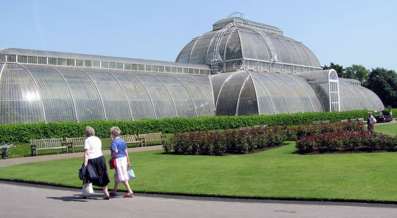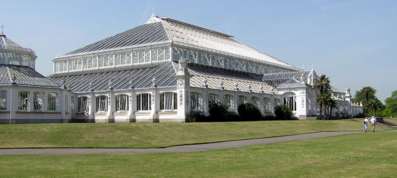
(Royal Botanical Gardens; London, England)
The botanical collection of the Royal Botanical Gardens was established in the late 17th century at the royal estate in Kew near London. By the end of the 19th century it had expanded to 117 hectares.
In 1841 the gardens were opened to the public, and the garden was developed into a leading scientific institution. A Palm House was added in 1844 - 1848, and a Temperate House was begun in 1859 - 1863 and completed in 1895 - 1899 after thirty years of use in an unfinished state.
By the second half of the 19th century the Royal Botanical Gardens held over 40,000 different kinds of plants. Its herbarium housed some 6.5 million dried specimens, and the library contained 230,000 volumes.
Today the Kew Gardens contain three museums, where botanists work on plant production, taxonomy and phytogenetics. The Gardens are responsible for two scientific publications, the Kew Bulletin and the Index Kewensis, a regularly updated record of all described higher plant species since Linnaeus.

The Palm House, built 1844 - 1848.

The Temperate House, built1860 - 1863 and completed 1895 - 1898. It has twice the floor area of the Palm House and is today the world's largest surviving glass and iron structure from the 19th century.
Board of Trustees of the Royal Botanic Gardens, http://www.rbgkew.org.uk/ (accessed 17 April 2004).
Photos: © Adrian Pingstone, released into public domain (Wikipedia)